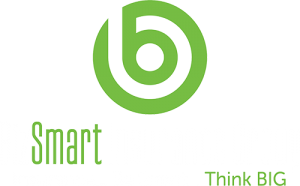Commercial Insurance Audits – Yikes! I Paid My Policy In Full. Why Do I Owe More Money?
Did you get a letter or invoice from your insurance carrier that stated you owed them additional premium due to the calculation of a Final Audit? You paid your policy every month and did not miss a payment, so how is this possible?
Most Commercial insurance premiums for General Liability are derived from the following: (not BOP’s- sq. footage or Auto Operations- # Class Employees)
General Liability: Rate X “Estimated” Yearly Payroll (1yr. from beginning of the policy effective date)
Or
Rate X “Projected” Yearly Sales (1yr. from beginning or the policy effective date)
Or
Rate X “Blend” Yearly Sales & Payroll (1yr. from beginning of the policy effective date)
Keep in mind that when a policy is written, the insurance company is covering all your exposure (except what is excluded) for that policy period. This means that the carrier is insuring your business whether it has $10,000 in payroll (sales) or $10,000,000 in payroll (sales). Since you (insured) cannot look into a crystal ball to get exact figures, the insurance carriers will price or rate based off estimated figures.
For example:
A plumbing contractor sits down with their agent before renewal. The agent asks the contractor what they expect their payroll for that contracting class to be for the upcoming term. The contractor (insured) provides the agent with a payroll figure of $250,000 (estimated) for the upcoming policy term.
At the end of the year, the plumbing contract had the best year of their business. They receive audit paperwork from the carrier or third party contracted out by the carrier to fill out and send back (3 types of audit requests – In person audit, paper/electronic self-performed audit or phone audit). They fill out the paperwork and input $500,000 payroll for the previous policy. Remember, the estimated payroll for that term was only $250,000. The audit is filled out and sent back to the carrier via mail.
In this situation, once the audit is complete, the insured will get a bill in the mail stating there is additional premium due (most likely double what was paid). Most insureds will have sticker shock and will usually question the audit to their agent.
Let’s think about this in terms of a home builder. You had a client put a 100% deposit down ($500k) on a house you are going to build for them. Along the way, the client added on many upgrades or in contractor lingo “change orders”. The upgrades cost you (builder) $100k. Once the house is completed, you would expect the other $100k of the payment as you used your materials, man power, resources, etc.. The insurance audit is doing the same thing. It is “realizing” the actual amount (completed home) vs. estimated amount (deposit). The difference would be what would be owe or returned back.
Ok, but I estimated my payroll correctly but I still owe a large additional premium (this section does not apply to premiums calculated by sales).
Below are possible reasons why your policy actual amounts differ from the estimated amounts:
- Did you collect certificates of insurance (COI’s) from each vendor or sub-contractor that did business with your company? If not, their exposure would be covered under your General Liability policy. RE: Increased payroll.
- Did you use “casual” labor? If so, was that amount calculated into your estimated payroll amount for the policy term? If not, that exposure will be captured at audit. RE: Increased payroll.
- Employee misclassification. Very similar to Workers Compensation, if job codes are not split via time card or if a worker provides multiple trades that is not broken apart (job costing), the auditor is going to classify the worker into the highest exposure General Liability class code.
- Non-Compliance of Audit. Most carriers have a built in provision/endorsement that states if audit are not completed in a specific manner of time, the company reserves the right to impose an estimated audit. I have seen companies use 25% increase in the exposure up to 50% increase. So, if you ignore the correspondence from the carrier to perform an audit, this will likely be the result. Keep in mind, you are not off the hook for the audit. If the audit is not completed, a Notice of Intent to Cancel (NOIC) will be triggered. If completed, the estimated audit will be backed out and replaced with the actual audit filled out by the insured.
If this is a familiar situation and you would like to prevent this from happening to you and your company, below are a couple of recommendations:
This might sound easy, but the best way to mitigate large audits is to sit down with your agent six months into the term, and again two month prior (renewal process) to the end of the term. The last thing my clients want is a bill in the mail that they were not expecting from an insurance audit.
At the six month term, I usually have the insured provide me with payroll information, sub-contractor information (total cost + certificates of insurance for each) and gross sales information. We identify whether or not the insured is tracking toward the estimated amount of payroll on the policy (if payroll is the exposure for General Liability) or if that amount is over/under stated.
The last recommendation would be to strongly suggest you complete the audit on time. If someone else like an accountant or office manager handles the audit, provide them with a completion date and follow up. Should you have questions performing the audit, contact your agent. Or, if you need more time to complete the audit, contact the auditor listed on the correspondence from the carrier. Do not wait until the company sends a 2nd or 3rd or Final request to complete. If you complete it the first time, you will save yourself time and money!
If you would rather have an agent that can keep you informed with risk management expertise, please reach out to us for a free quote or consultation here.





